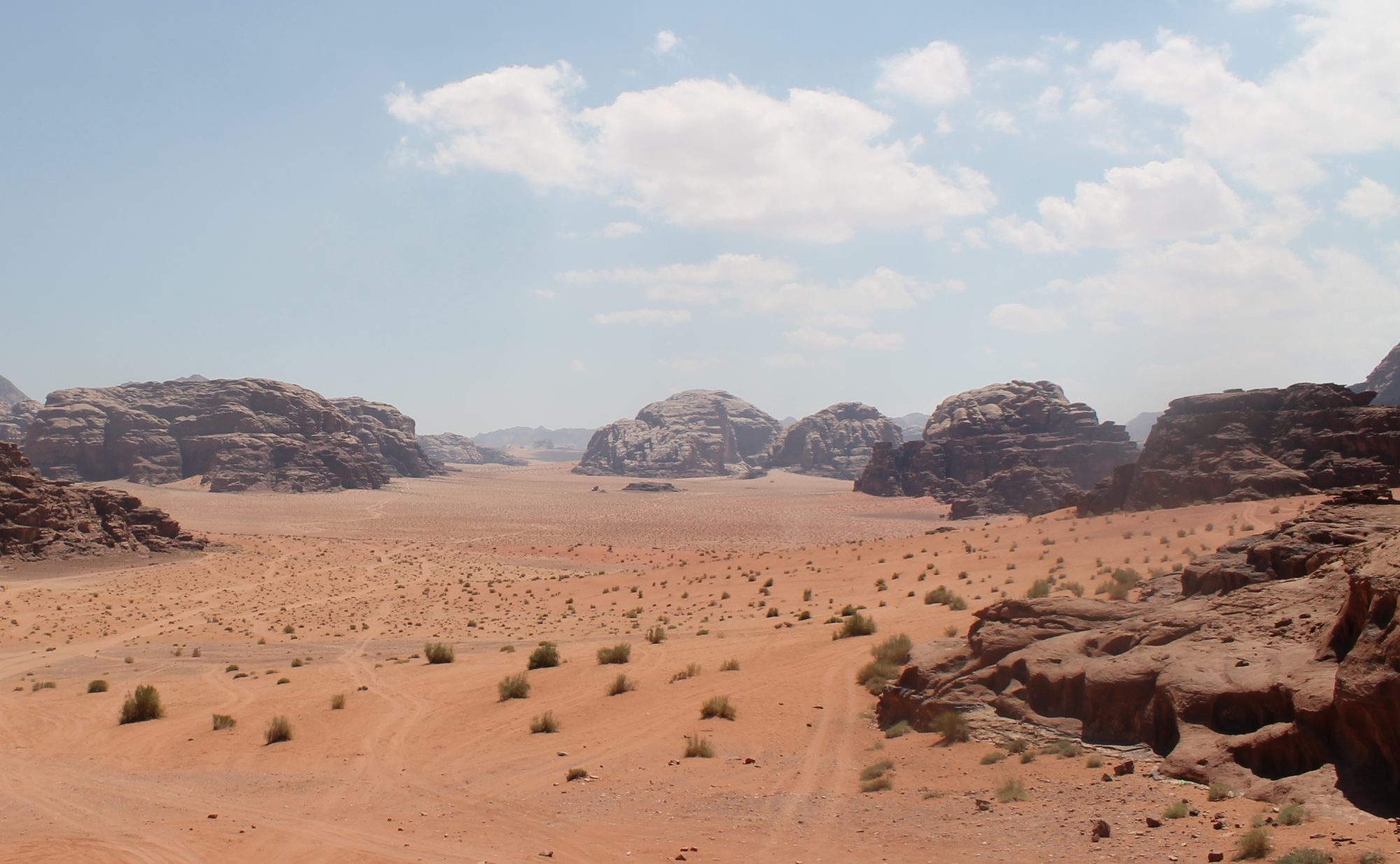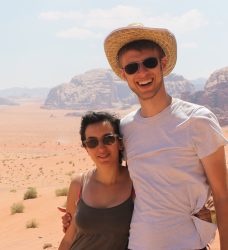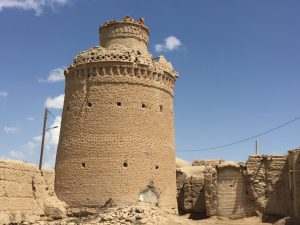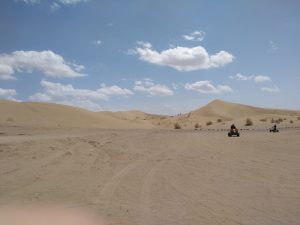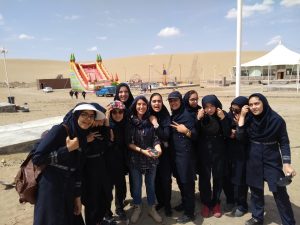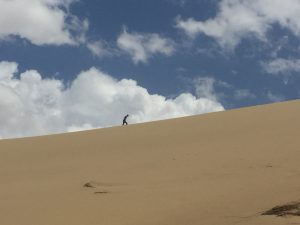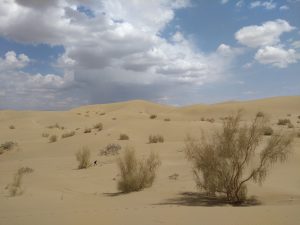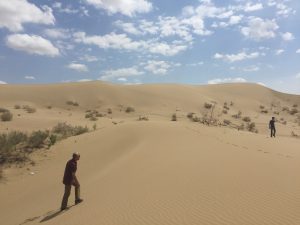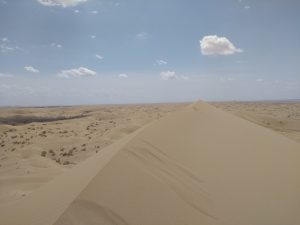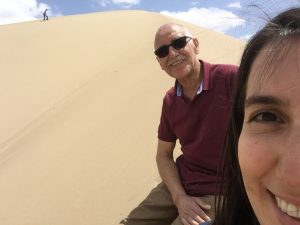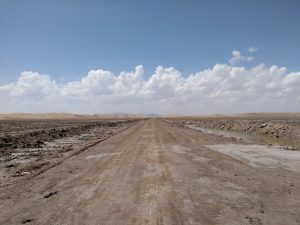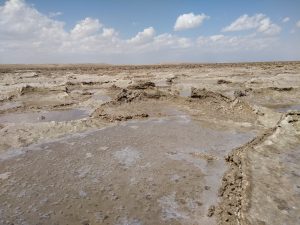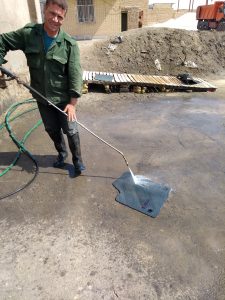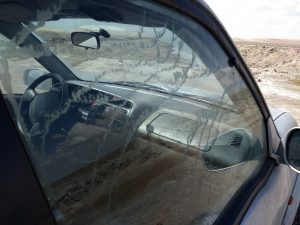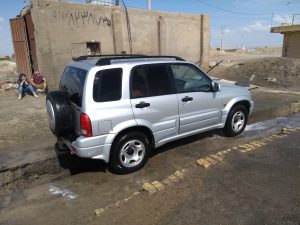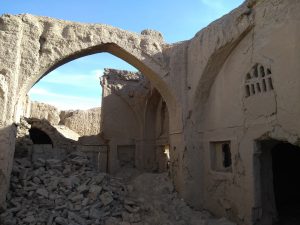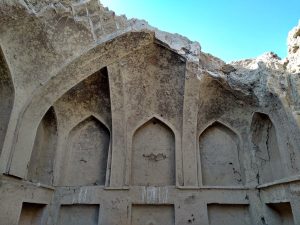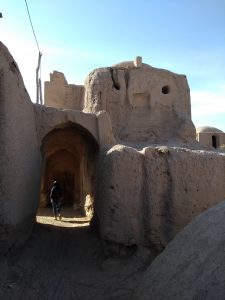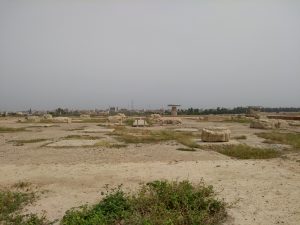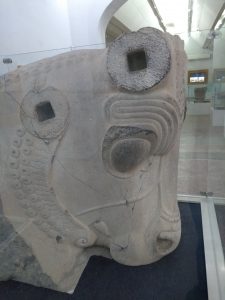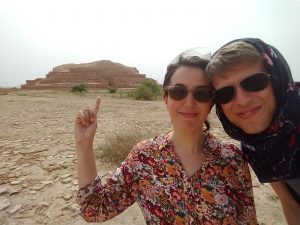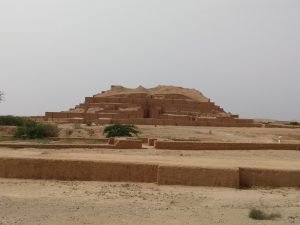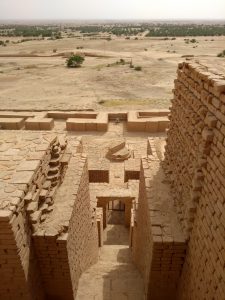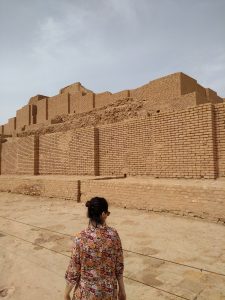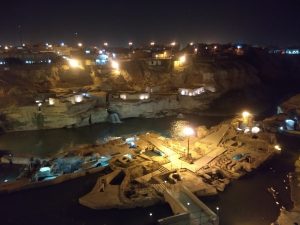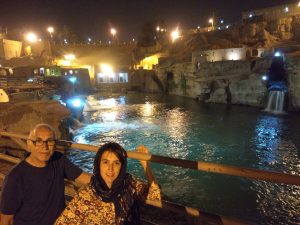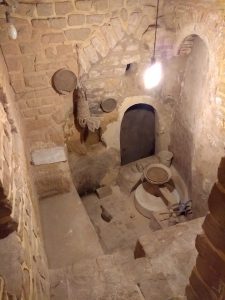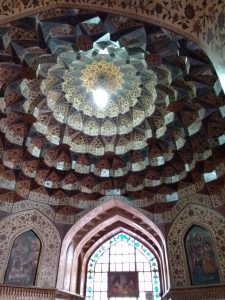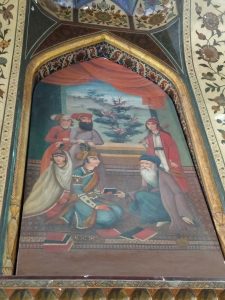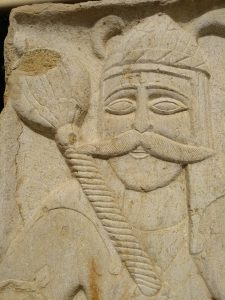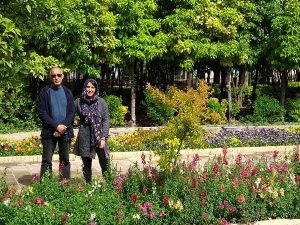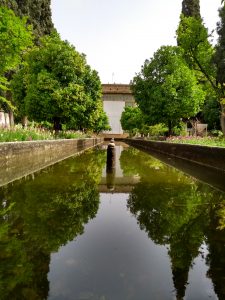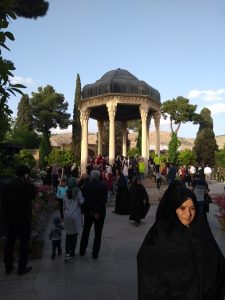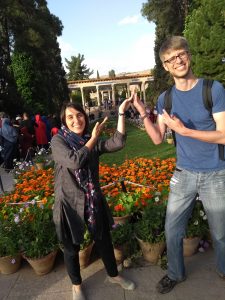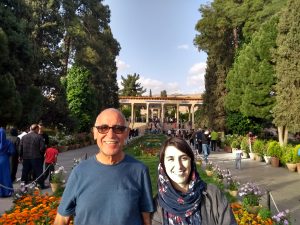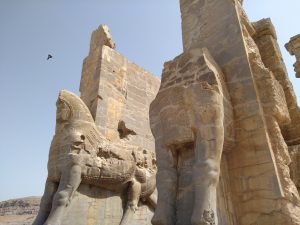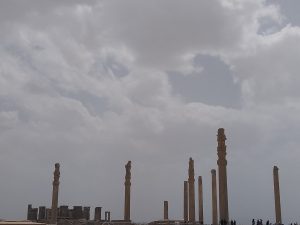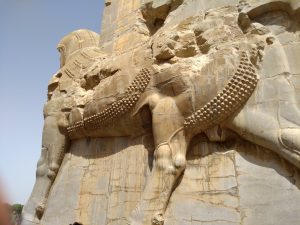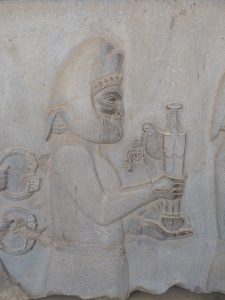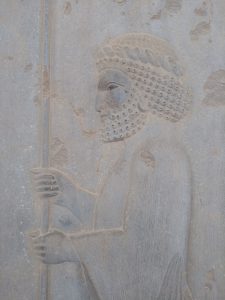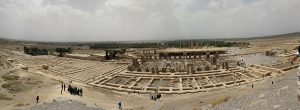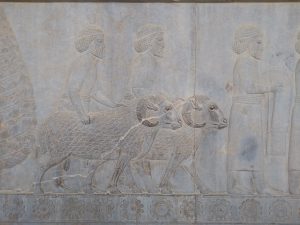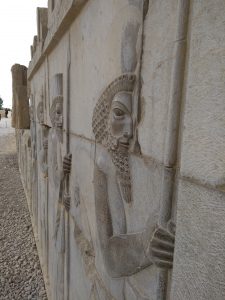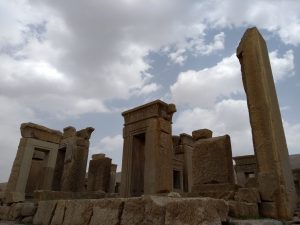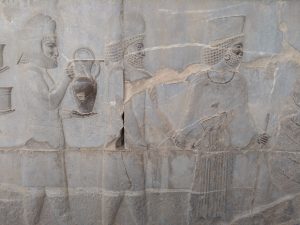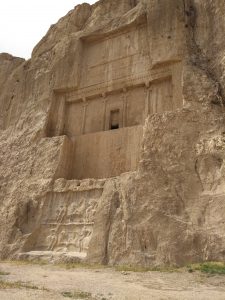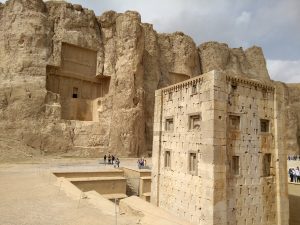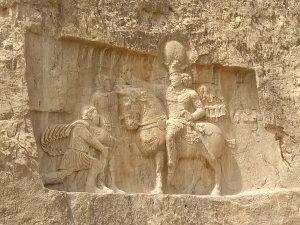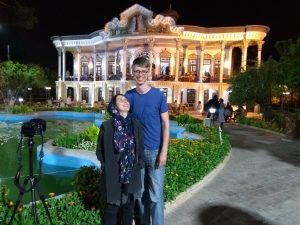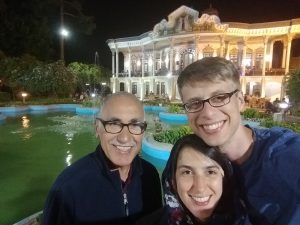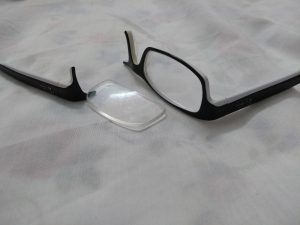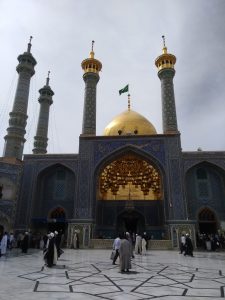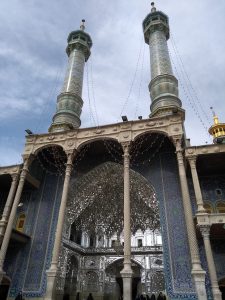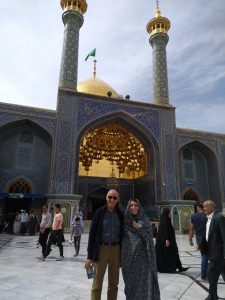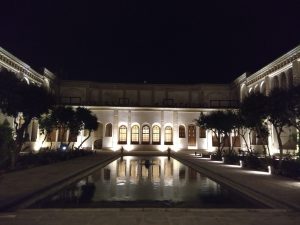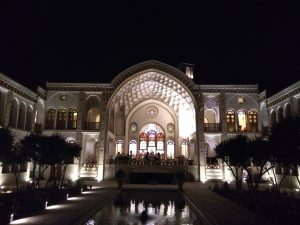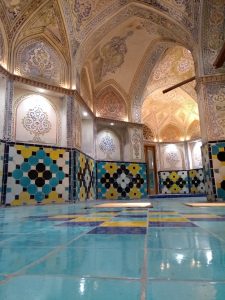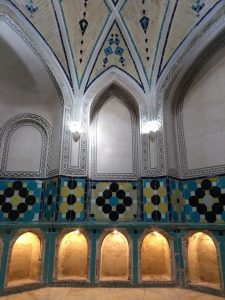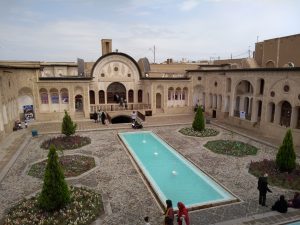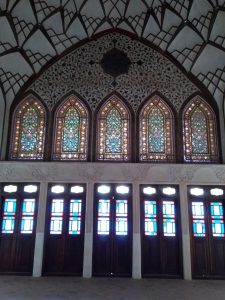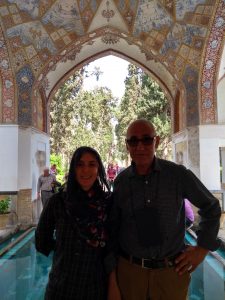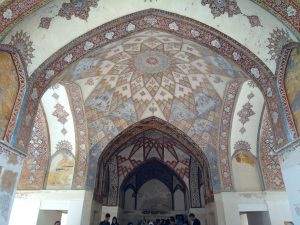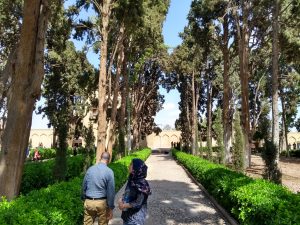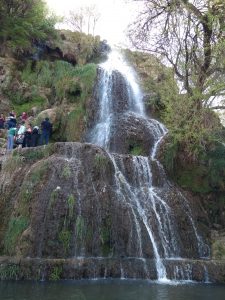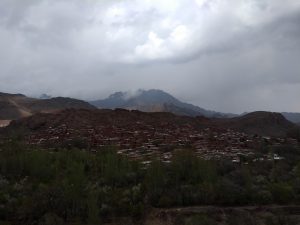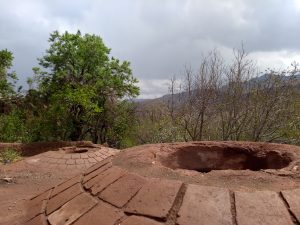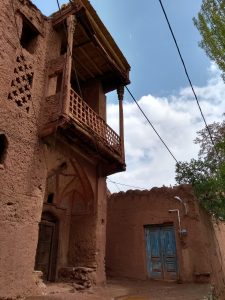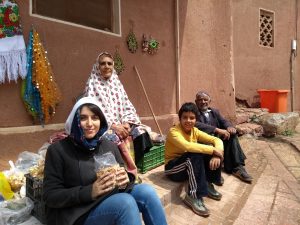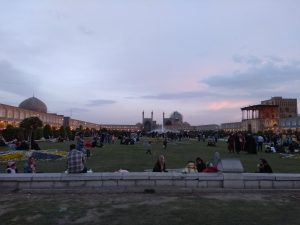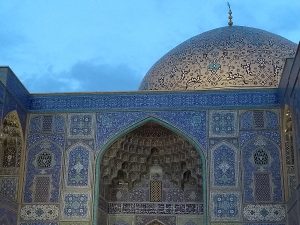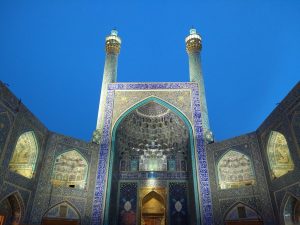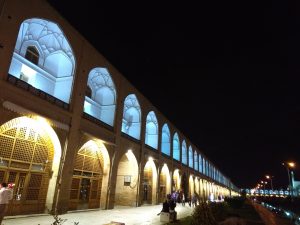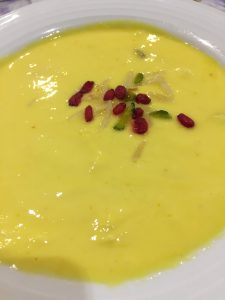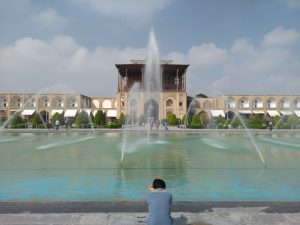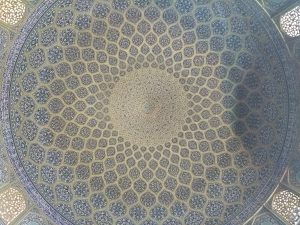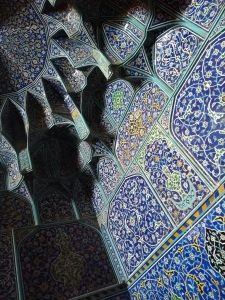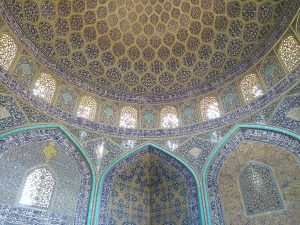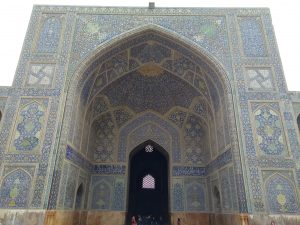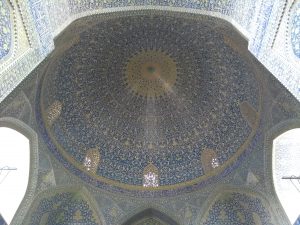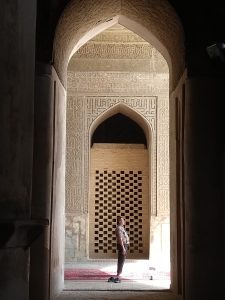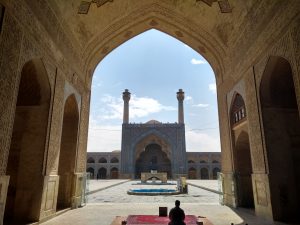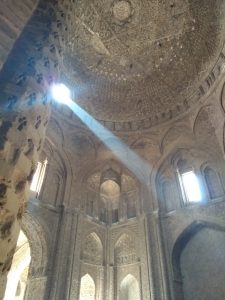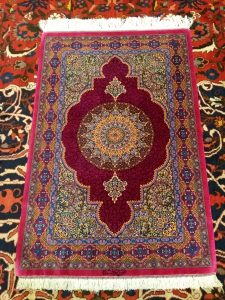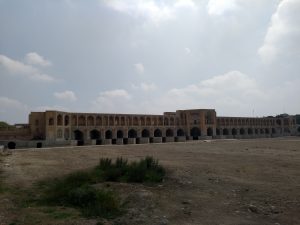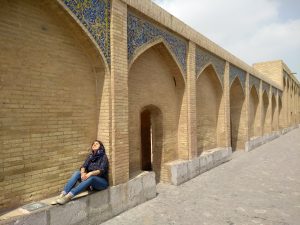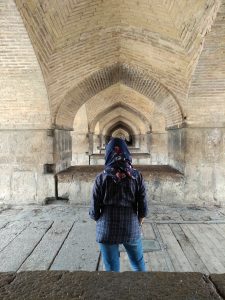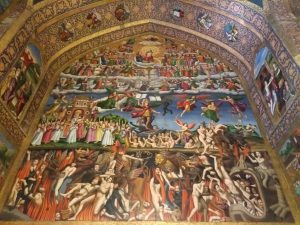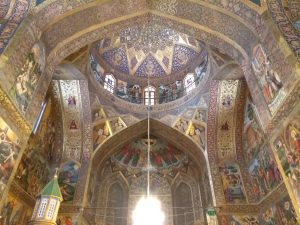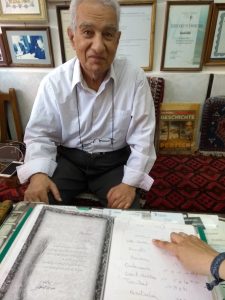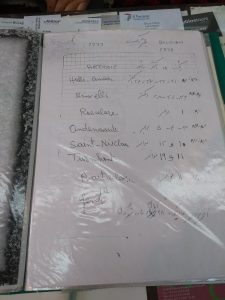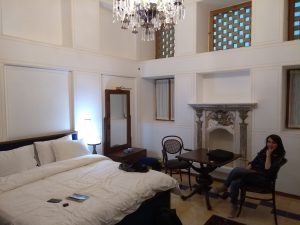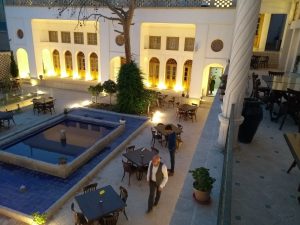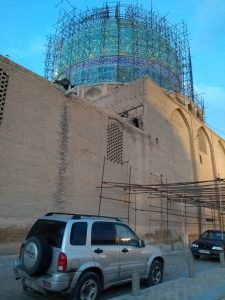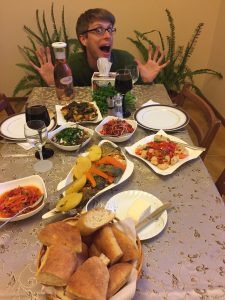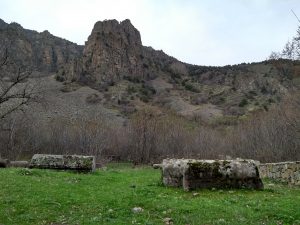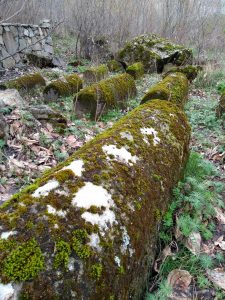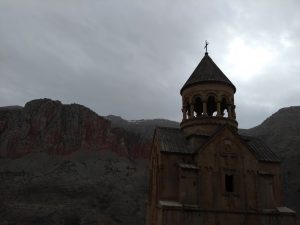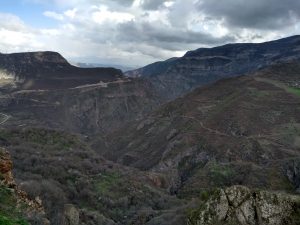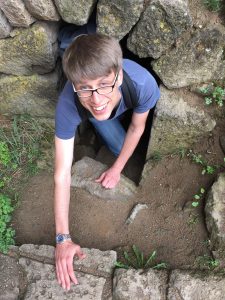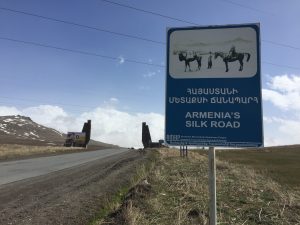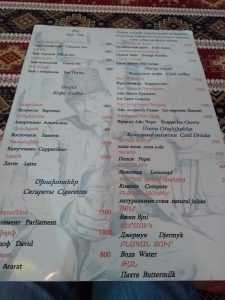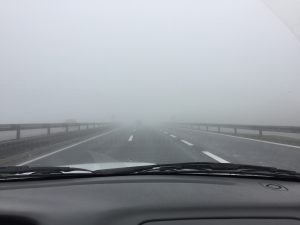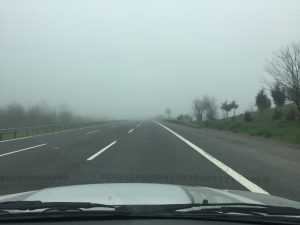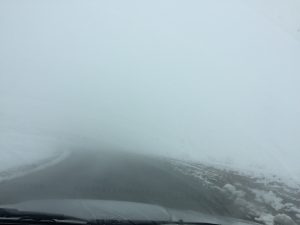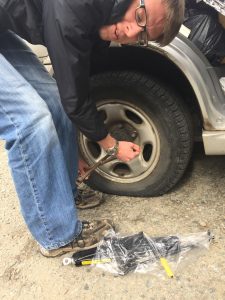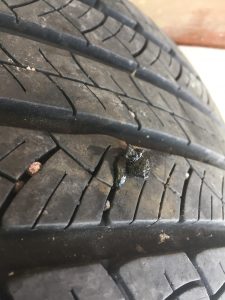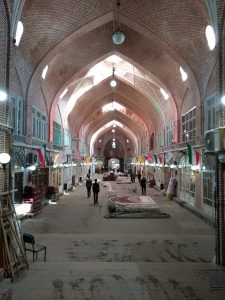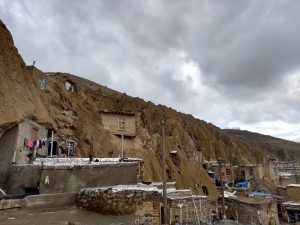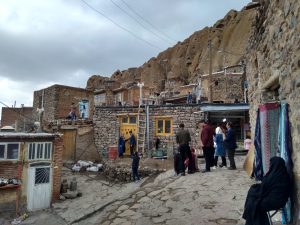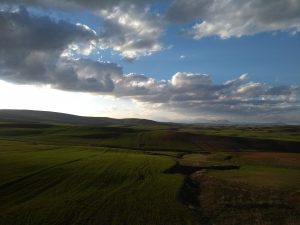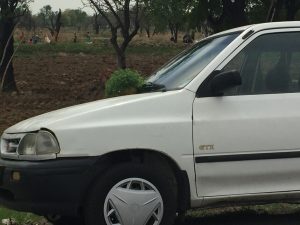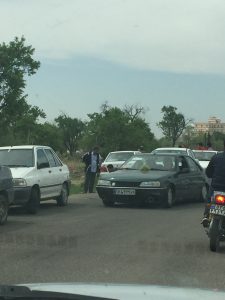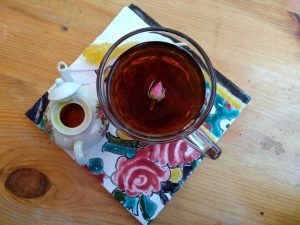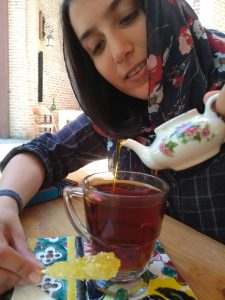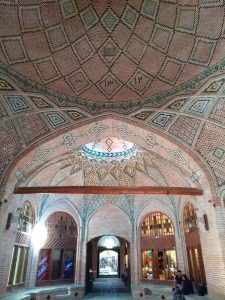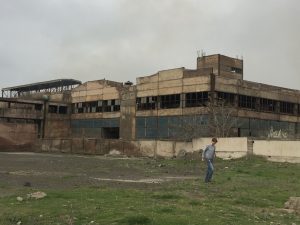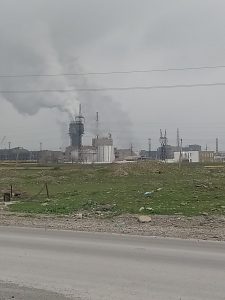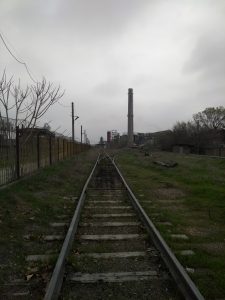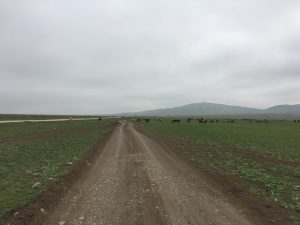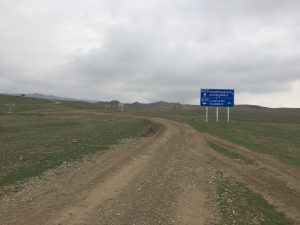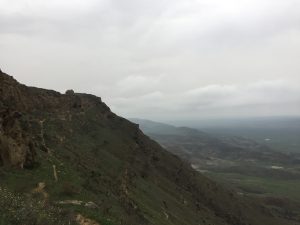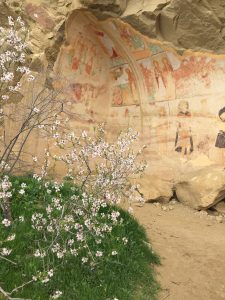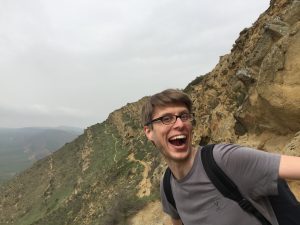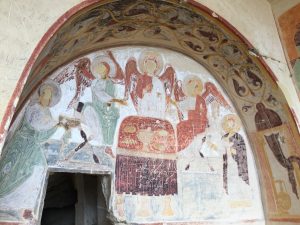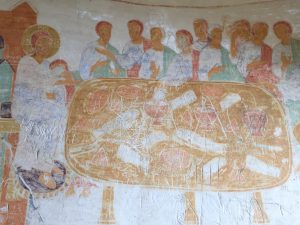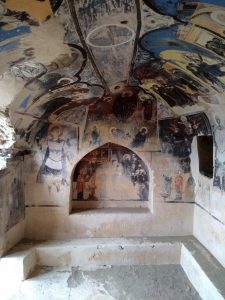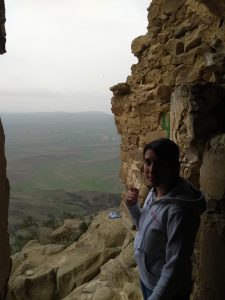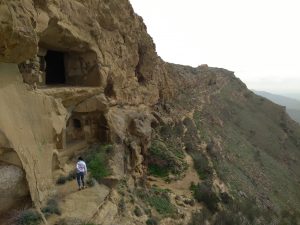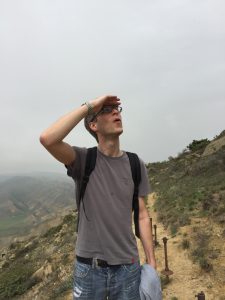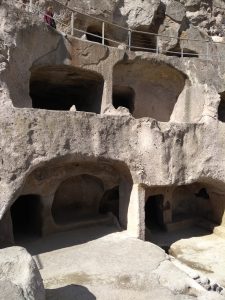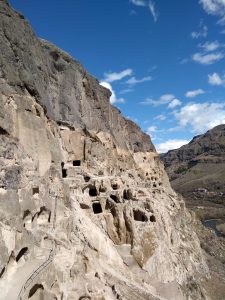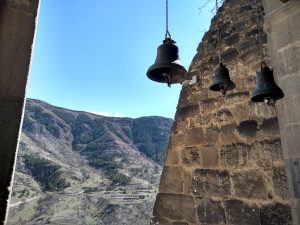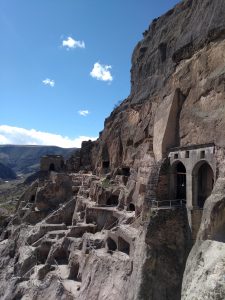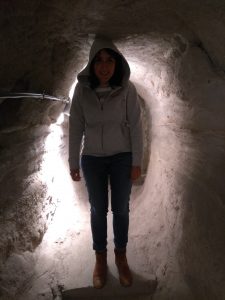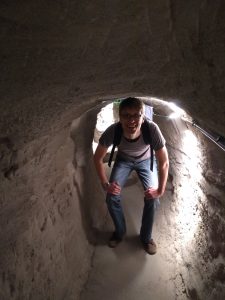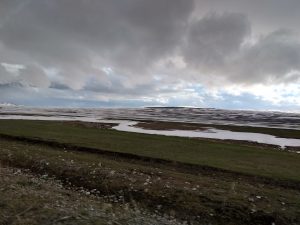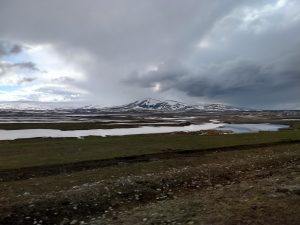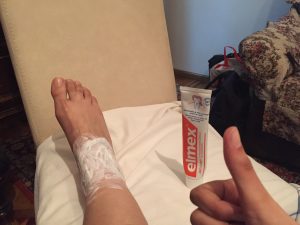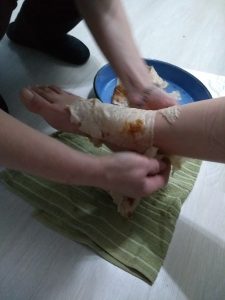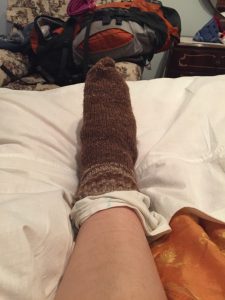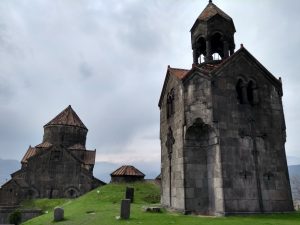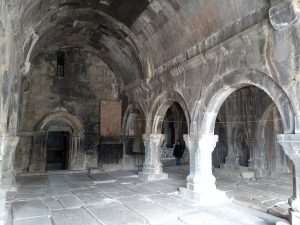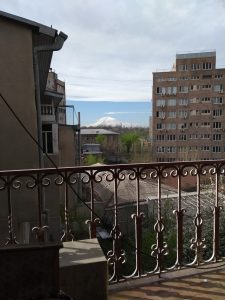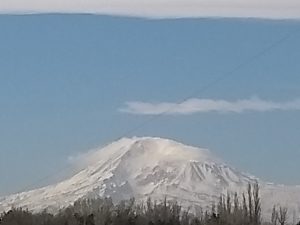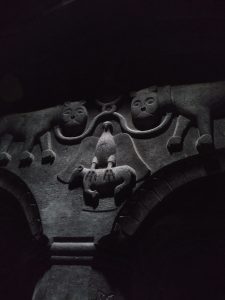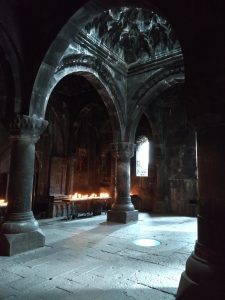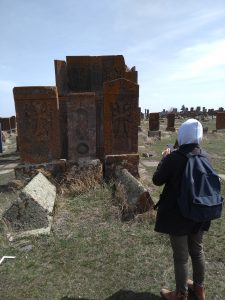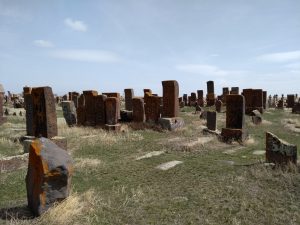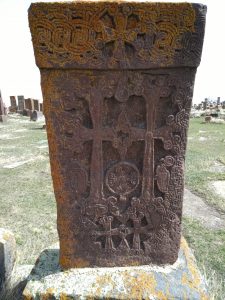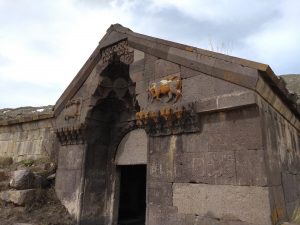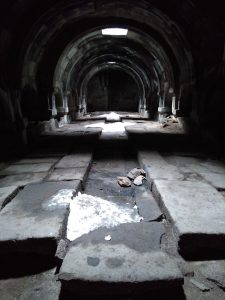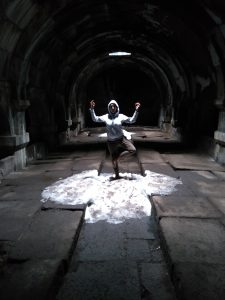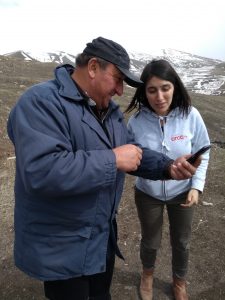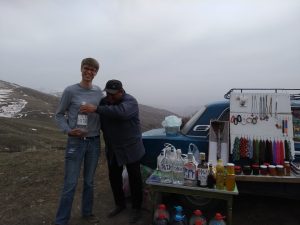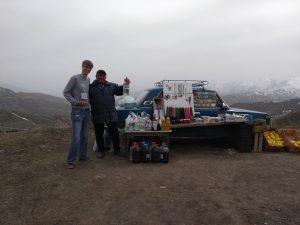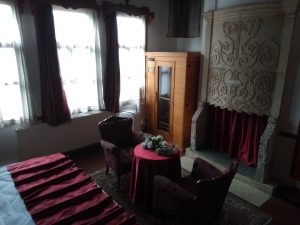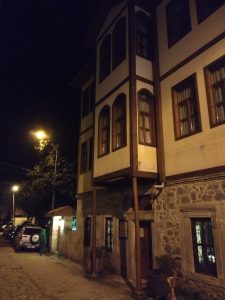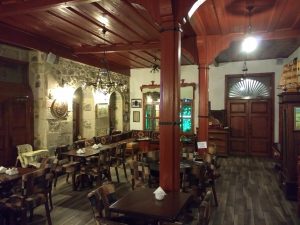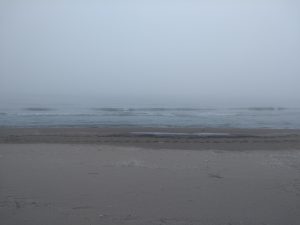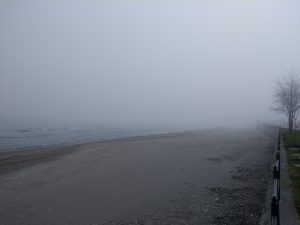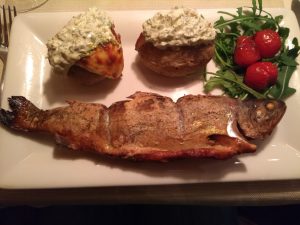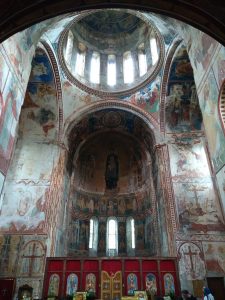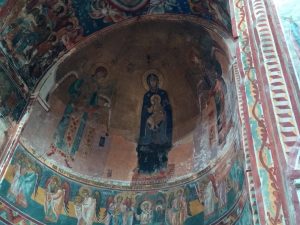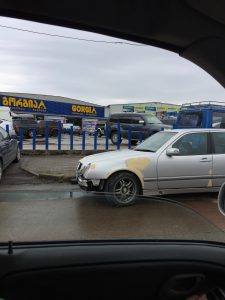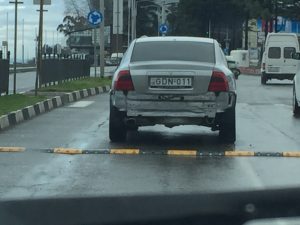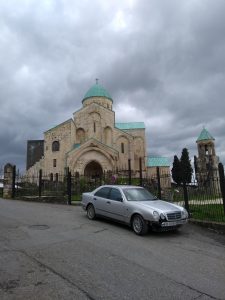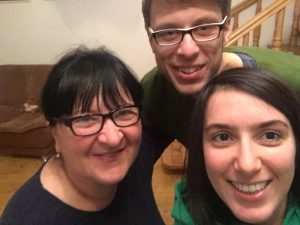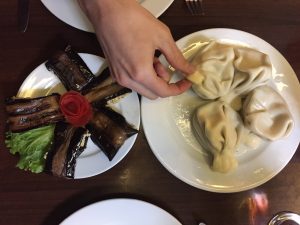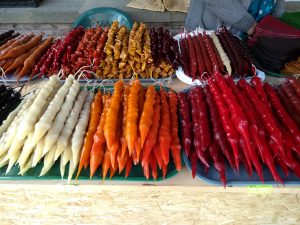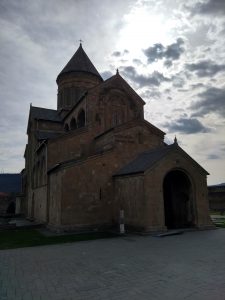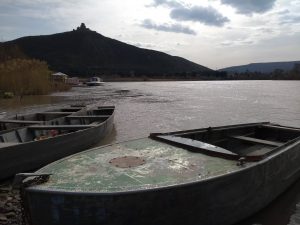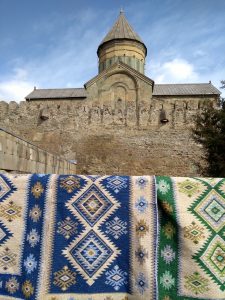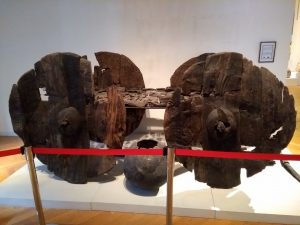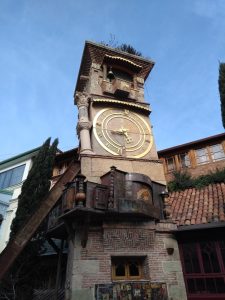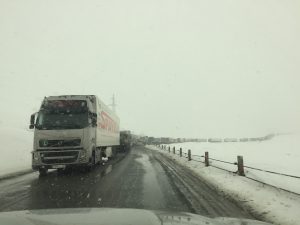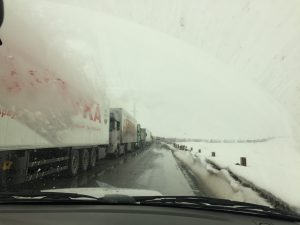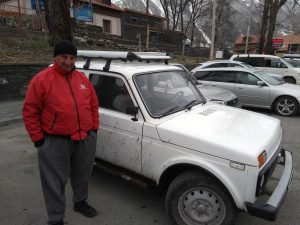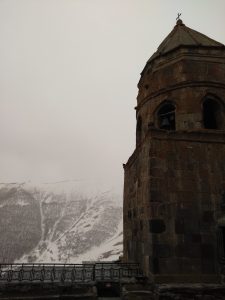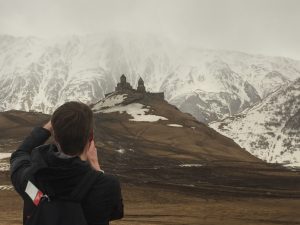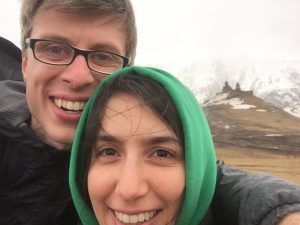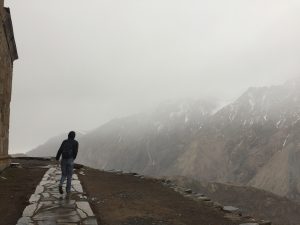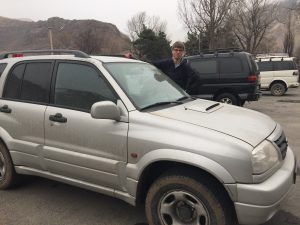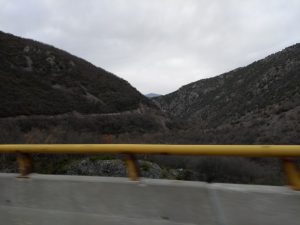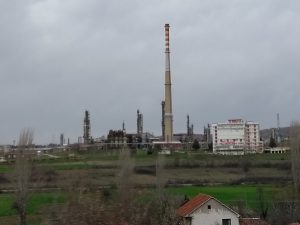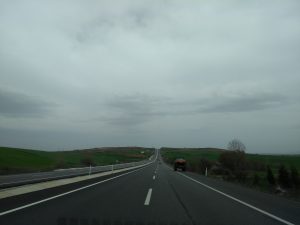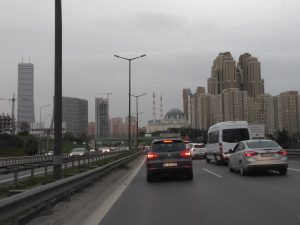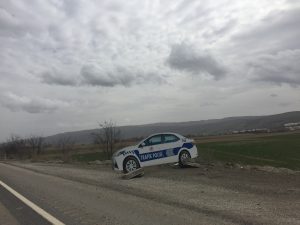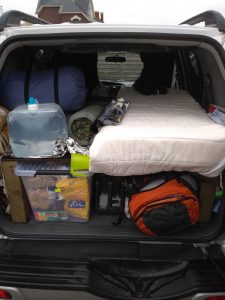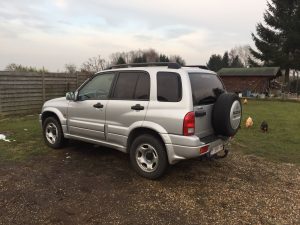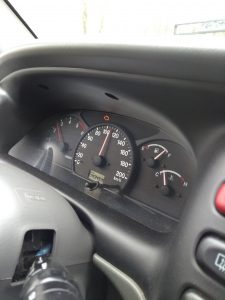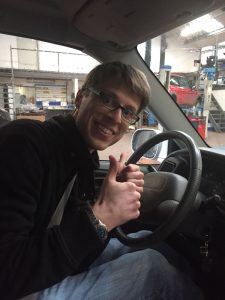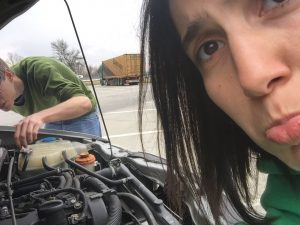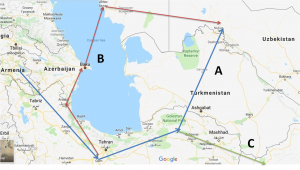Sunday, the 15th of April
On our last day in Shiraz, we still had plenty to visit; we woke up at 6.45 to visit the Masjed-e Nasir al-Molk Mosque, also known as the Pink Mosque. Apparently it’s one of the most photographed mosques in Iran, you’ll understand why:
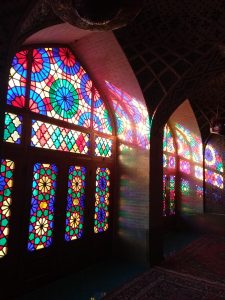
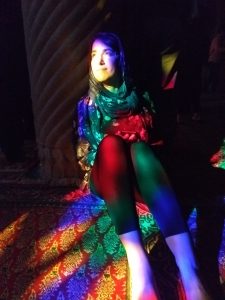
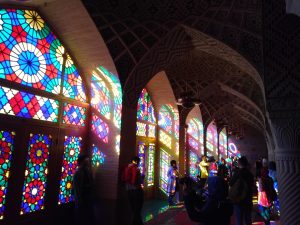
(We were lucky to get there early, you can see in the last picture how busy it got an hour later…)
Most of the buildings in Shiraz were built or renovated by the 18th century Zand dynasty, with Karim Khan being one of the main benefactors. He was a brilliant but humble man, preferring to be called ‘Regent’ (Vakil) rather than ‘King’ (Shah), as a servant of the people. The names of many Shirazi buildings still bear this title, such as the Vakil Mosque and Bazaar:
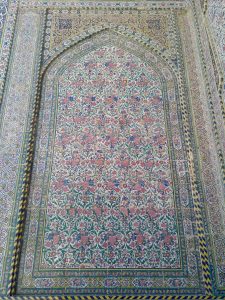
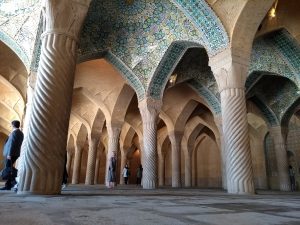
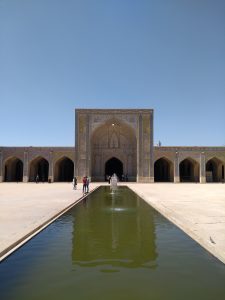
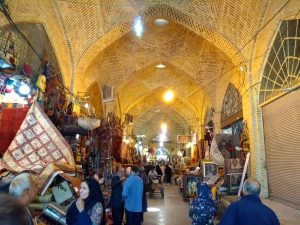
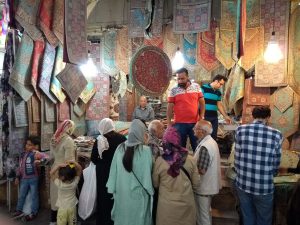
While strolling through the bazaar, we ran into Menachem, an Iranian jew. He kindly invited us for lunch at his place, an offer we couldn’t refuse. He explained to us he often seeks out tourists to practice his French. After some delicious watermelon and tea, he offered Wafa a small present. While taking some photos, he suddenly turned to hold Wafa and kiss her on the cheeks, which startled her. We didn’t quite know what to make of this, a friendly gesture or something else? It did ruin the moment for Wafa, though…
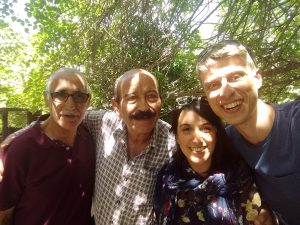
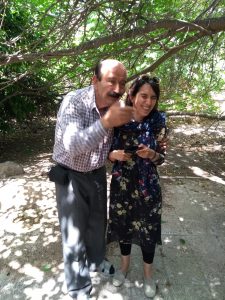
(You can see the reaction of Wafa in the second picture…)
We didn’t let it ruin the day, however, and went on to visit a nearby salt lake. Maharloo Lake, or the Pink Lake, stretches for miles to the southeast of Shiraz. Beautiful place, and our feet got a good scrub as well!
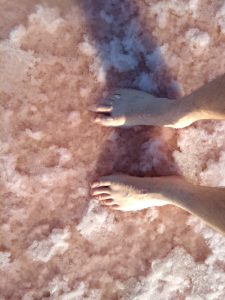
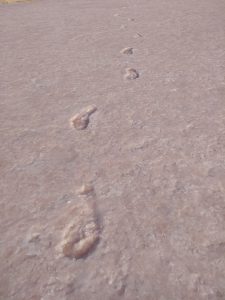
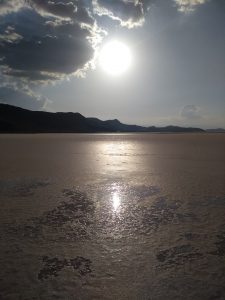
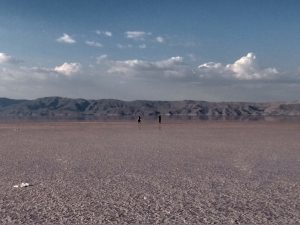
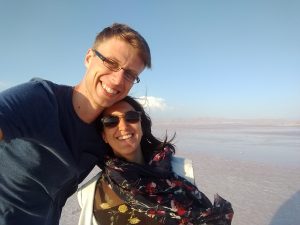
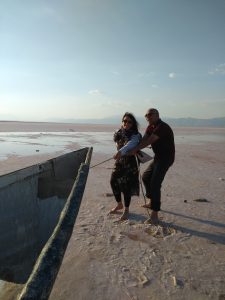
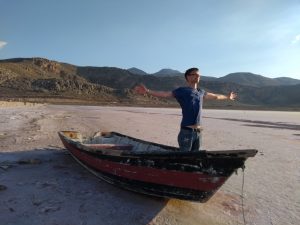
Dinner was the best we had of the whole trip through Iran so far. It was so good, in fact, it was all gone before we could take a picture…
Monday, the 16th of April
Today we were leaving for the desert town of Yazd. First Wafa got a little surprise, though… While putting on her trousers, she suddenly spotted something moving inside of them:
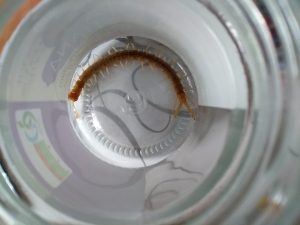
(Say hello to our little friend! A giant centipede, about 10 cm big/tall/long!)
Mehdi told us we probably brought it with us from the desert, as these things normally don’t live in the city. However it found us, it certainly gave Wafa a good scare! (and Tom too, with Wafa’s shrieking…).
With a heartfelt goodbye, we took our leave from Mehdi and company. We left the centipede as a new pet for him to enjoy…
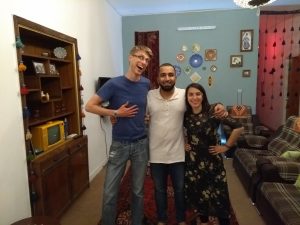
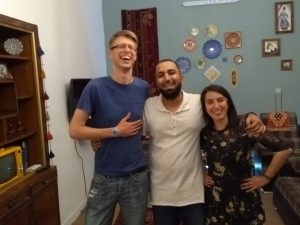
Luckily, the ride to Yazd was otherwise pretty uneventful. We did pass some magnificent mountains though.
After arriving in Yazd in the afternoon (another 400 km ride behind us), we first sat down in the courtyard of our hotel for a cup of tea. Suddenly, the sky turned orange… SANDSTORM!!!
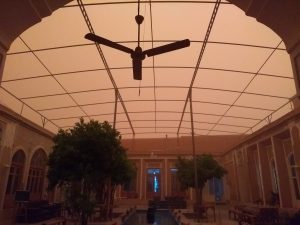
We were told this only happens once or twice every year. Just our luck :). After half an hour, the sand turned to rain. Also quite rare in these desert parts. So far, it has started raining in about every Iranian town we’ve visited… Maybe they should start paying us?
Tuesday, the 17th of April
When we got up the next morning, the rain had also brought the cold with it: only 7°C. Under a grey and overcast sky, we visited Yazd. It was really pleasant to just stroll around in the old town, with its old mud brick houses. Pictures don’t do it justice under this weather, though:
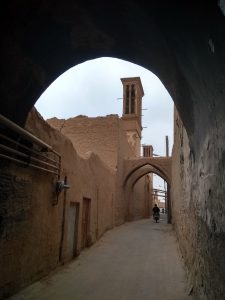
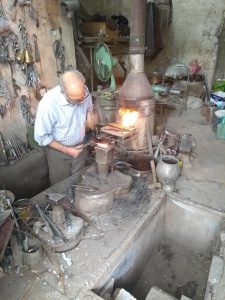
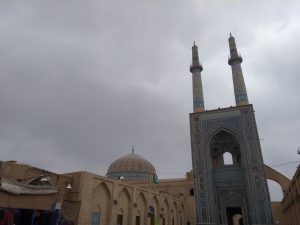
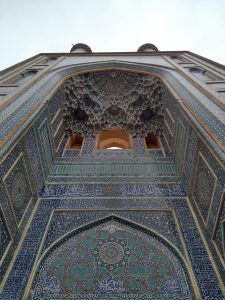
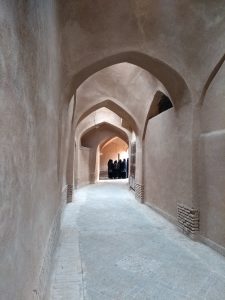
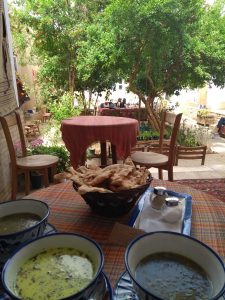
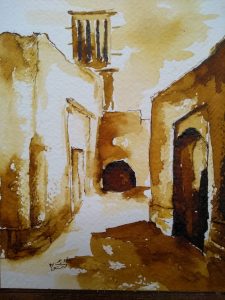
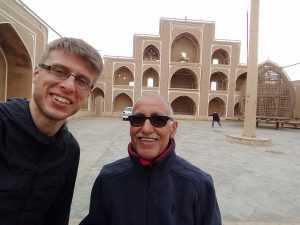
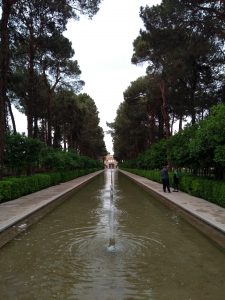
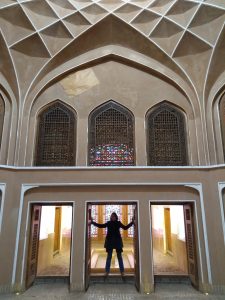
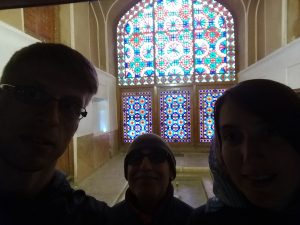
(You can see the tall, seemingly gothic towers (first picture) everywhere, they’re called badgirs. These are ingenious cooling systems for the old houses in the town: warm air rises through them, creating permanent suction and thus ventilation in the house, keeping it cool in summer. Last picture: Abdel photobombing our selfie…)
In the early evening, we visited the local gym for a fitness demonstration: Bastani. This type of fitness originated with the exercise regimes of army soldiers, but is now a ritualized and musical tradition upheld by old and young alike:
We had dinner in the local Silk Road (!) restaurant. It was a buffet, where we assumed one of the dishes was beef. We only learned later on, that in fact we’d been eating camel meat! Which was a first for all of us. Tastes more or less like beef, but a bit more stringy perhaps.
Wednesday, the 18th of April
There were a few interesting places to visit in the surroundings of Yazd. First we headed off to one of the holiest shrines in the Zoroastrian religion: Chak Chak. (Not making that name up.) When the Arabs invaded Persia in 640 AD, one of the last Sassanid princesses took refuge in these parts (see previous posts for more on the Sassanids!). In need of water, she struck her staff at the mountainside, at which point water started dripping out. The shrine itself isn’t really that much to look at, but the scenery certainly has its merits:
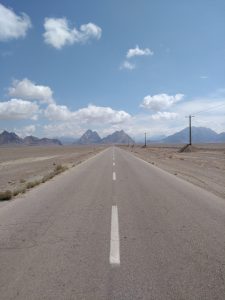
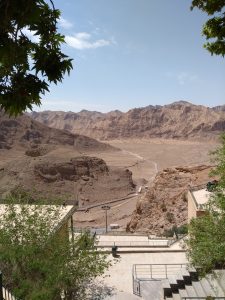
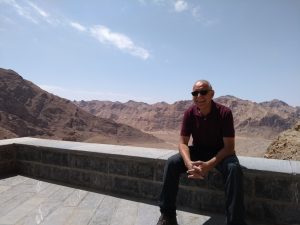
The nearby town of Kharanaq contains an old deserted part, which makes for some awesome ruin exploring. We also had a nice walk nearby, through the small patches where farmers were tending their crops:
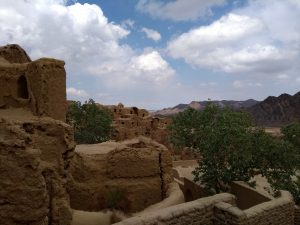
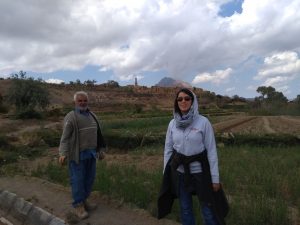
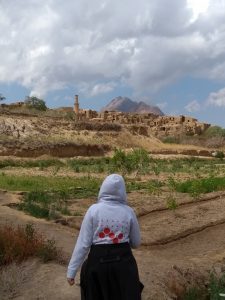
When we got back to our hostel, we got some bad news in our mailbox: our Turkmenistan visa had been refused, for the second time even. You see, we didn’t mention it at the time, but our initial request for a Turkmenistan transit visa (in Brussels) had actually been refused by the end of March. When this transit visa is rejected, you have a second chance though: you can apply for a tourist visa, which is supplied when you book a tour through the country with a local tour operator.
By this time, the tour operator that we contacted had done the necessary paperwork, and we had been waiting for the response of the Turkmen immigration services. Again a no, then.
What does this mean for the rest of our trip? Like we explained in one of our first blog posts, there is a plan B: Azerbaijan and then a ferry across the Caspian Sea to Kazakhstan. Which is a lot more hassle. So on the boat we go!
Lucky for us, Moshim, our host at the RestUp Hostel, had just the thing to cheer us up: a delicious home cooked meal. It actually reminded us of a vegetable tajine! Moshim has been a great host to us, by the way, ever helpful, always cracking jokes… Comes greatly recommended for a stay in Yazd!
Thursday, the 19th of April
Because of the changed plans (going through Azerbaijan), we need some more time to travel through Iran. Instead of going to Turkmenistan in the northeast, we’re now heading back towards Europe, leaving in the northwest. This means a few extra days in Iran. But that also means our visa might run out (valid until 30/4). So today we got our visa extended in Yazd. The procedure at the local police station is pretty straightforward, but it still took us almost three hours to get everything done (payment at the bank, having pictures taken, copies of passports and visas…).
Afterwards, Abdel told us that he’d like to fly home from Teheran (while we pass there on the way to Azerbaijan). Our pace has been wearing him out, and in his opinion, the additional kilometers through Iran, Azerbaijan and Kazakhstan would be too much for him. So the planning for the next few weeks looks more or less as follows:
- 28/4: drop off Abdel at Teheran airport
- 1/5: cross border with Azerbaijan
- 3/5: get on a ferry to Aktau, Kazakhstan
- 6/5: cross border with Uzbekistan
- 8/5: arrive in Khiva
All in all, this plan B should only cost us about a week extra compared to the original itinerary. Keeping in mind that the ferry might cause more delays, of course…
We spent the rest of the day in Yazd, resting up for the next leg of our journey. First a short visit to the towers of silence, a Zoroastrian shrine on the outskirts of Yazd:
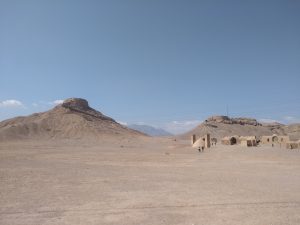
Then we just lazed about, having a drink on one of the many rooftop terraces in Yazd, and just strolling through the old town. As the sun was out, the views were considerably better than two days before:
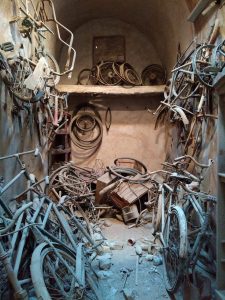
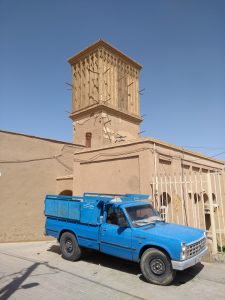
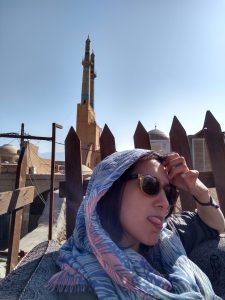
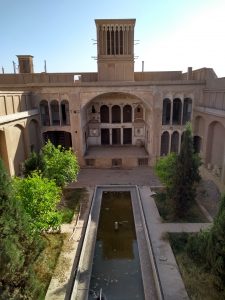
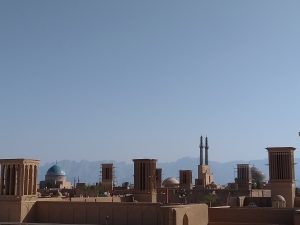
Friday, the 20th of April
Another 400 km drive, to Kerman in the southeast of Iran, today. On our way there, we visited one of only two round caravanserais in Iran (Shah Abbas the Great, him again, ordered the construction of 999 of these things in the 16th century). The one in Zein-o-din has been beautifully restored and turned into a hotel/teahouse:
(pictures later)
We arrived in Kerman in the early afternoon. After picking up our guide, Sajjad, we headed towards the nearby Lut desert. Sajjad is a medical student slash tour guide, and is really knowledgeable about just about everything concerning Iranian history, nature,… After spending the rest of the afternoon in the desert, we climbed one of the Kaluts to watch the sunset:
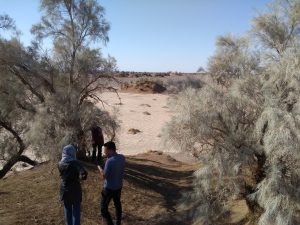
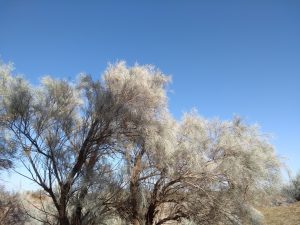
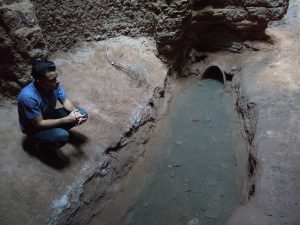
(Qanats are manmade underground canals, used for transporting water from the mountains towards the desert. These enable villages to thrive even the harshest of conditions.)
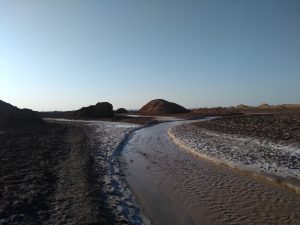
(The Salty River. For obvious reasons.)
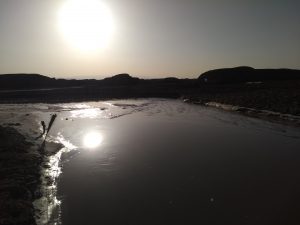
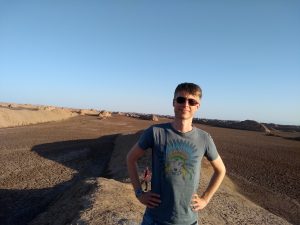
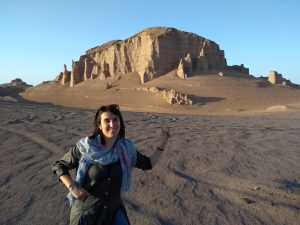
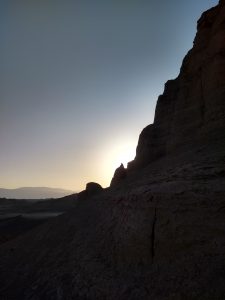
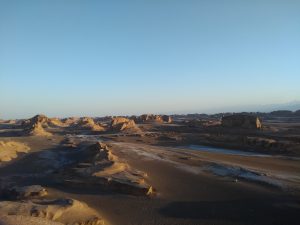
(Also in this picture: Suzy for scale. See if you can find her. White = more salt, not snow.)
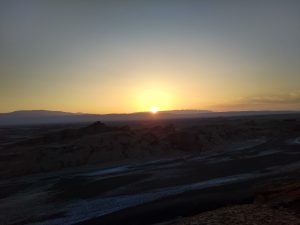
(Lut means ‘empty’. The Kaluts, part of the Lut desert and looking like a city of rocks, then mean ‘city of empty’.)
After a tasty chicken dinner in an ecolodge in a nearby desert village, we went to bed early. The plan was to go stargazing at 1 AM. Of course, 1 AM came and went, without anybody waking up. At 2, Tom’s brain decided it really wanted to see the stars, so he got up and took a little nighttime desert tour on his own. Enchanting view of the Milky Way. Sadly, no pictures though, as our phones’ cameras only produce potato quality shots.
Saturday, the 21st of April
After driving back to Kerman and dropping of Sajjad, we went on to visit the nearby town of Mahan. Mahan is home to a pretty mausoleum (forgot who it belongs to, though) and a nice 19th century garden:
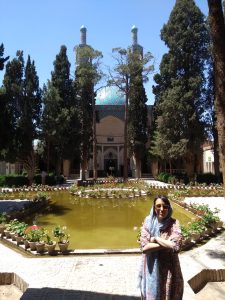
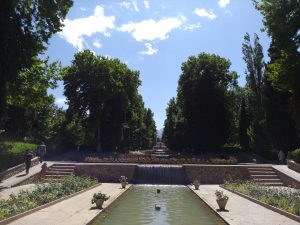
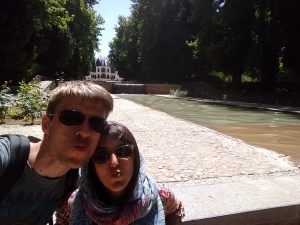
(Putting on our best duckfaces.)
Near the garden, we were invited to lunch by a friendly army officer and his family. In traditional Iranian style, we had a picnic by the side of the water. We received a few gifts as well: some rosewater perfume, a 5000 Rial banknote, fruit… In exchange we could offer them a German euro and some Lotus speculoos!
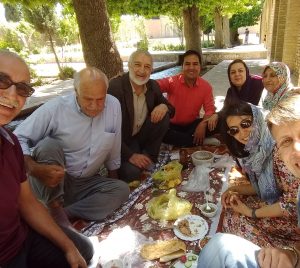
The rest of the day we spent in Kerman. We thought pickings were a bit slim here, apart from a nice madrassah and the local hamam.
Sunday, the 22nd of April
We started our trek from Kerman in the southeast, to Mashhad in the northeast of Iran. The first leg took us to Esfahak. After driving for 100’s of kms through literally nothing, we arrived at the village late in the afternoon.
Esfahak itself is rather nice. It’s a green oasis in an otherwise very arid environment. We stayed in another ecolodge, this one located in the old town. This part of town was abandoned 50 years ago, after an earthquake. Our host, Moshin, started renovating some of the old houses a couple of years ago. One by one, the other villagers are doing the same. It made for a lovely stay in an otherwise deserted ghost town:
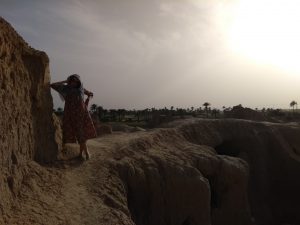
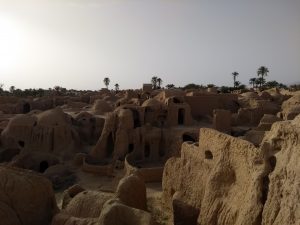
Walking through the small garden patches at the back of the town, in the shadow of palm trees, gave us a flashback to our time spent in Morocco, in 2015:
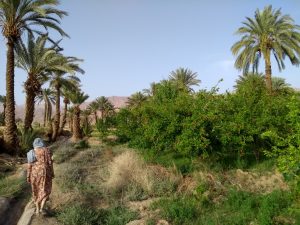
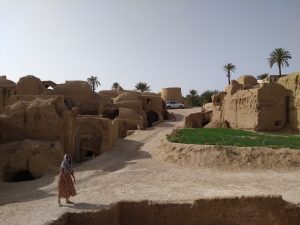
(Even Suzy got a nice view!)
